



|

|

|

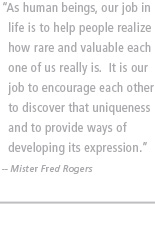

A View from South America: Consumption in Brazil By Beth Furtado An expert in marketing, retail, distribution, point-of-sale and consumer buying behavior, Beth Furtado is a teacher of the Full Marketing (Specialization Course) and Marketing Master (Executive MBA) courses at Madia Marketing School, in Sao Paulo, Brazil. A writer for several websites and blogs, Beth is the author of the following books: Retail Singularities (2005), Consumption Horizons (2006) and Contemporary Desires - A Patchwork of Trends, Ideas and Businesses in Paradoxical Times (2008). She is currently the head of ALIA, a marketing consulting company. With a GDP of US $1.9 trillion, according to IMF estimates, Brazil is the world's eighth largest economy, a position conquered by a high performing domestic consumption, which got by unscathed through the world crisis. A cocktail of aspects has contributed to the country being able to experience one of the best times in history: a stable economy, easy access to credit, a growing job market and a set of government-sponsored cash transfer programs. Plurality is a word that translates the Brazilian reality well, along with its many aspects and consequences. This is a country with a huge territory and a large population, but with rather low population density levels - 22 persons per sq. km (48 persons per sq. mile), compared to countries like Japan, which has 337 persons per sq km. On the other hand, some regions, such as the Southeast, are populated to the limits of conviviality, with 42.3% of the Brazilian population distributed over 10.6% of its national territory, whereas others, such as the North, hold 8% of the population in 45.2% of the Brazilian national territory. The changes that have taken place in Brazilian society in recent years are substantial and reflect a people undergoing a full structural transformation regarding its relationship with family, access and consumption. The country's main transformation has brought dynamism to consumption, in addition to an outlook to a prosperous reality and, above all, dignity. In 1994, at the beginning of the Real Plan - a government economic stabilization program - chicken and yogurt became the icons of the access to consumption by the low-income population to products that had remained inaccessible to them until then. The arrival of 30 million Brazilians in class C (#1) in recent years has triggered a major access-evolution process, which now includes credit cards, air travel, health care, computers, home ownership, home renovation and a car, among others. One can easily imagine the impact that the access of 30 million people to these categories has had on the Brazilian economy, since these had thus far been reserved for the higher classes. The plurality of the Brazilian population leads to a peaceful conviviality with paradoxes. On one hand, price is a relevant attribute that guides the dynamics of the popular segment, as well as of society as a whole. On the other hand, the performance of the premium segment in Brazil is comparable to - and in many aspects, it even supersedes - those of European countries. Overcoming and access certainly are key words for the transformation of the Brazilian scenario. And access to the one thing that will truly change Brazil: education. That is the true ticket for reaching the "nation of the future", considering that the majority of Brazilian youngsters are in classes C, D and E. The dissemination of private, low-cost universities will allow education to become increasingly valued as the main tool for social ascension and for improving the population's quality of life. We are experiencing a new, more prosperous Brazil and it is stimulating to know that even more prosperous years are expected to come our way. In all aspects and throughout all social classes, Brazilian consumption is expected to become increasingly sophisticated in the coming years. After all, we found out that the arrival of the low income population to consumption is the one fact that has turned the future into a present for the country; a context that is not going by unnoticed by companies that, as they expand, include Brazil in their investment plans, promoting the perpetuity of this virtuous momentum. Come and spend Christmas with us! It is expected to be the best in 20 years and in such a positive environment, you will certainly find a gift for yourself and your loved ones too. -------------- #1. The Brazil Criterion takes Class A as one extreme boundary (the richest portion of the population) and Class E as the opposite boundary (the poorest). The rich and the extremely poor are not part of this stratification system. Currently, Class C accounts for 86 million people and already represents the majority of the population: 47% of the total. |
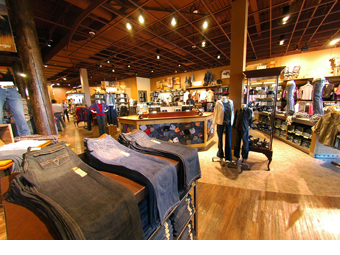
Go West, Go Wrangler Celebrating its heritage and legacy, the leader in western apparel and iconic American denim maker, Wrangler, recently opened a new prototype in Lone Tree, Colorado. The brand has always been about hard work, independence, fit to purpose, and a straightforward sense of durability and function. This new environment appeals to the working, the weekend or lifestyle "rancher," who shares the values of the brand, its authenticity and quality. The store concept showcases a full breadth of Wrangler products, including a core denim statement for men and women with a range of sizes, fits, and finishes that provide guaranteed and total shopper satisfaction. Floor fixturing includes two large runway elements (one for men, one for women's) that allow forms to showcase the legendary product fit and unique finishes. Materials add to the sense of rustic outdoor living, including plank flooring, raw metals, leather, and rough wood. Interesting details throughout the store include the wall and perimeter system and the patchwork pocket facing of the cash wrap. For more, click here. 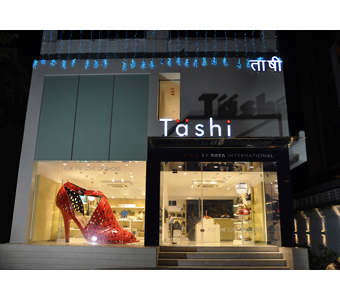
For the Love of Shoes: Tashi by Tata International JGA recently designed a unique Indian shoe store for Tata International targeting the sophisticated, well traveled consumer who is looking for something new. This new concept, Tashi by Tata International, opened in Mumbai earlier this month. Focusing on Tashi's iconic position: "For the Love of Shoes," the new space blends the place with product, all in an earth-friendly environment. Working in conjunction with a global team including architect, FRDC (Future Research Design Company), visual merchandiser, Charles Perez, and ad agency, Leo Burnett, among other local resources, JGA's collaborative effort reinforces the Tashi brand identity with a grand exterior statement. Located in a shopping area of Mumbai that radiates maximum visual stimulation, an overscaled stiletto sculpture acts as a signature beacon for the shoe lover. At 7 feet high, with a 50 inch heel, the shoe measures 11 feet from end to end. Store zones are specially merchandised to explore choices for men and women within lifestyle displays. Women's department fixtures are curved, lightweight and airy, with pedestal tables, white finishes and butter-tone leather. Men's department fixturing, like the shoes themselves, are more structured, block-like fixtures, essentially organized on a grid; neutral in finish, with wood, taupe leather, and stone. In the first phase of the rollout, Tata International will open six exclusive Tashi stores in Mumbai, New Delhi and Chandigarh. For more, click here. 
Shopper Revolution.com Features Ken Nisch on Shopping Trends As their first in a series of interviews to be posted on the shopper insights website: ShopperRevolution.com, Liz Crawford, SVP Strategy at MARS Advertising, interviews Ken on the future of retail, including topics such as mobile technology, brands, the shopping experience and eRetail. Among Ken's comments is a discussion of consumers' demographic impact. Ken said, "The consumer sort is more impactful - not necessarily through income levels, but rather through their psychographics. Social values and lifestyle choices affect retailers more than many suspect. Psychographics demonstrate consumers buying from their hearts, rather than their wallets." To see the entire discussion, click here. 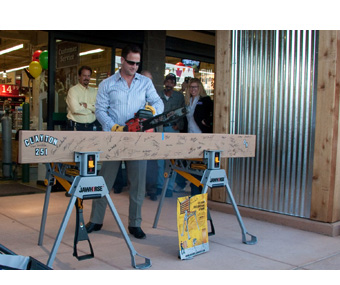
JGA Design Featured in New OSH Location Orchard Supply Hardware recently held another opening of its award-winning design with a most unusual ceremony, this time at the Clayton Valley Center in Concord, California. Rather than using the traditional ribbon, a "lumber cutting" event marked the occasion, with OSH CEO, Rob Lynch, wielding the saw. The new store offers all of the features of the original prototype that opened in 2009; recognized by DDI Magazine as best designed store of the year, as well as by the Association of Retail Environments with an Outstanding Merit Award in the Large Specialty Store category, and Best In-Store Communication. For more about the concept, click here. 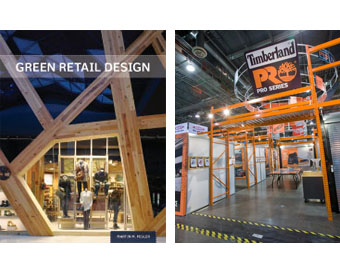
New Green Book Highlights JGA Projects In his first book on Green Design, author Martin Pegler spotlights exceptional sustainability-centered projects from firms around the globe. JGA's work is highlighted for two clients, The North Face, whose first Gold LEED certified project debuted in Boise, Idaho as an award-winning community favorite; and Timberland PRO, whose reusable trade show booth exudes the iconic attributes of the rugged brand. For more about Martin's new book, click here. 
USA Today: Consumers in the Mood to Spend In a November 5th feature in USA Today, retail writer Jayne O'Donnell reported that more upscale purchases, like jewelry, are on the minds of shoppers this holiday season. Ken Nisch agreed saying "There will be less desperate promotion, leading to fewer promotions overall. Retailers now have a lot more clarity on what's going to sell and not going to sell thanks to product testing and merchandise planning." For the full story, click here. The Detroit News: Deer Widows on the Hunt for Bargains In a November 12th article by Jaclyn Trop, The Detroit News retail reporter wrote about the fifteenth consecutive year of Birch Run Premium Outlets extending its hours, while offering extra discounts and gifts for the wives and girlfriends left behind during the start of Michigan's deer hunting season. Asked about the targeted event, Ken Nisch said, "The weekend is a clever way of extending the holiday season, especially since Birch Run faces competition from Great Lakes Crossing Outlets (a regional mall about 60 miles south). Unlike department, big box and specialty stores, outlet centers get less busy during the holiday. Shoppers prefer to stay closer to home, where they have more choices, spend less time returning merchandise and still find prices that rival those at the outlets." For the full story, click here. |

|
|
JGA is dedicated to responsible email. If you feel that you have received this email in error, or would no longer like to receive email from JGA, please click here to unsubscribe. Subscribe to Retail Focus Online, change your subscription preferences, or forward a copy. JGA, Inc., 29110 Inkster Road, Suite 200, Southfield MI 48034 Phone: 248-355-0890 Copyright 2010 JGA, Inc. All rights reserved. |